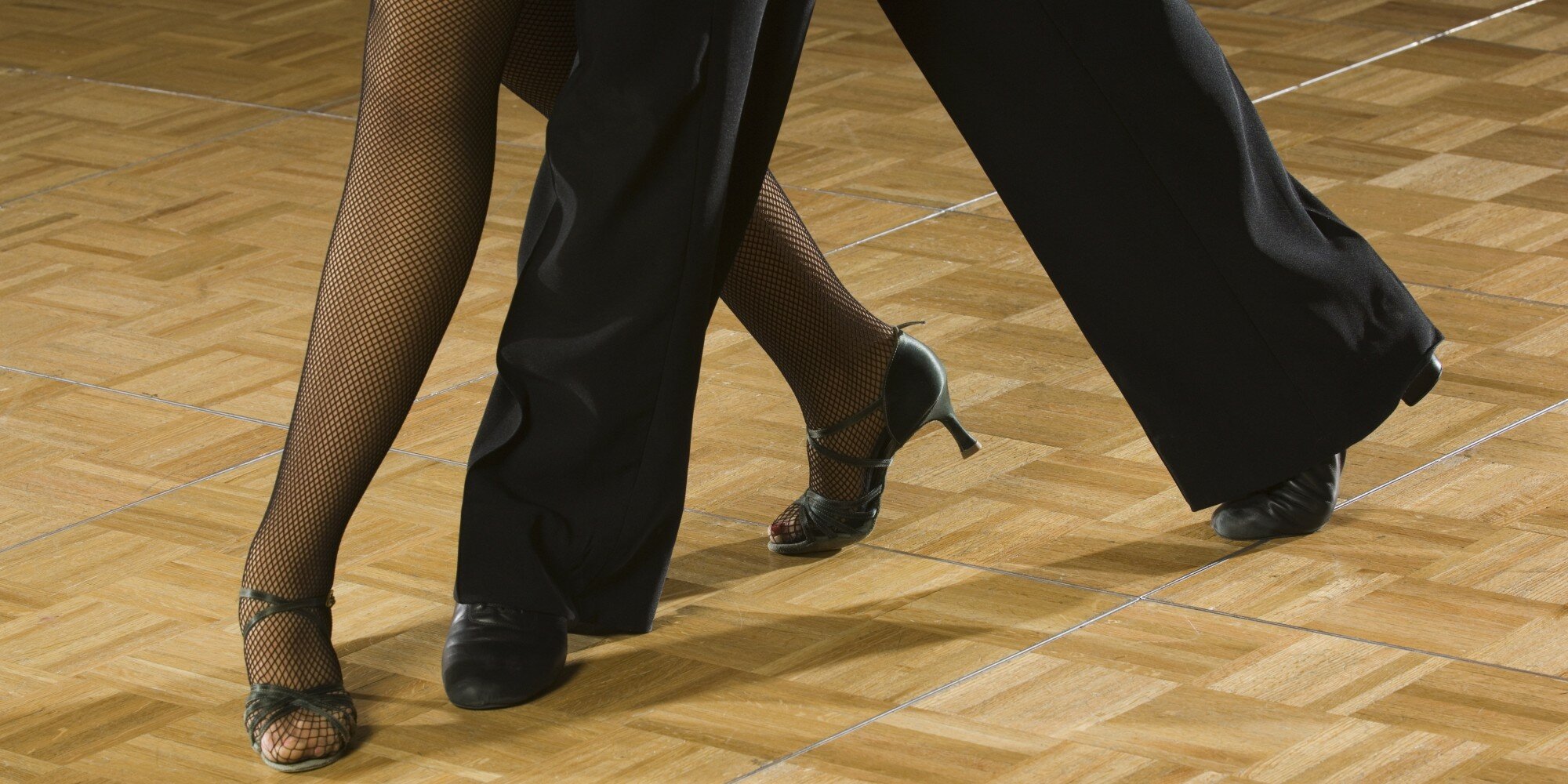Forward Walk Turning 
5 October 2016
The Forward Walk Turning is the one of the 9 types of Walks in Rumba and Cha Cha that is perhaps most often danced incorrectly. When danced properly, it showcases beautiful leg lines and sharp action, but when danced incorrectly it can cause sloppy and even tangled feet on the dance floor. There isn't that much to learn about the Forward Walk Turning, and it is putting what you learn here into practice which is truly important.
What is a Forward Walk Turning?
The Forward Walk Turning is essentially a walk that starts as a Forward Walk and ends as a Back Walk. When you take a Forward Walk on the RF, you will step forward onto the RF to end with weight on the RF and the LF behind you. When you take a Back Walk on the RF, you will step back onto the RF to end with the weight on the RF and the LF in front of you. When you take a Forward Walk Turning on the RF, you will step forward onto the RF, then once both feet are placed you will turn to the Left (keeping the balls of both feet in contact with the ground), until you end with weight on the RF and the LF in front of you.
Two Tracks
In Latin dancing, normal Walks occur with your feet on two separate tracks. If you were to stand on a floor with a straight line down the centre of it, with one foot on either side of the line, you would walk forward with your Right Foot always on the right side of the line, and your Left Foot always on the left. This is called walking on two tracks, and whether you walk down the street or you Rumba Walk on the competition floor, the normal way to walk is on two tracks. Because of the turn out of the feet, it can sometimes appear that we walk on a single track, but in Latin the tracks are measured from the balls of the feet, since that is where your weight must be carried. If you step forward with turn out, then rise onto the balls of the feet, swivel the heels outward so the feet are parallel, and then lower the heels to the ground, you should see that you are truly on two separate tracks.

Whether dancing a normal Forward Walk, a Back Walk, or a Forward Walk Turning, it is important to remain on two tracks.
Amount of Turn
The biggest mistake dancers make when it comes to the Forward Walk Turning is that they turn too much between feet. The amount of turn made on a Forward Walk Turning is only 3/8 turn. The reason for this is that since we walk on two tracks, turning a full 180° would result in crossed feet. Try this yourself: stand up with your feet together, parallel to each other. Keeping your feet parallel, slip the Right Foot forward about the size of a step. Now see how far you can pivot to the left over the balls of your feet before your legs get crossed. The final amount you can turn is your personal maximum for how much turn your Forward Walk Turning should have, and it should be about 3/8 of a turn.
If ever you turn more than 3/8 between the feet, your feet will cross and you will begin to dance a Spiral Action. To learn more about this, click here to read our BGBB article on the Spiral Action.
How to Turn More than 3/8 without a Spiral
Method 1: Continuing in one Direction
Let's say you are dancing Forward Walks in a straight line toward the Wall, and you want to dance a Forward Walk Turning and continue with Back Walks toward the Wall. You need to make a full 1/2 turn, but the most you can make in a Forward Walk Turning is 3/8, so how do you do it? This problem comes up in many figures, such as the Lady's Open Hip Twist, and the solution is to turn 3/8 between the feet, and then as your free leg collects under your body to prepare to step backward, dance an additional 1/8 turn (or however much you need). This ensures you never end up with crossed feet, and your turn will look sharp.
Method 2: Changing Direction
Let's say you are dancing a Spot Turn, where you need to go in one direction, turn, then go back in the other direction. In this case, there is a way to make more than 3/8 turn. Take your forward walk across the line of your standing foot, and after you untwist you will be on two tracks again. The farther your cross your step, the more you will be able to turn before ending on two tracks again. Of course, the more the legs cross the more awkward and potentially less beautiful the position is.
The Final Look
If you wanted to dance a Forward Walk, a Forward Walk Turning, and then a Back Walk (such as the Lady's steps 4-6 of the Open Hip Twist, Closed Hip Twist in Rumba or Cha Cha), this is how it would look:
| Count | ||
| 1 | Dance one regular Rumba Walk forward on the LF | 2 |
| 2 | Dance one Rumba Walk forward on the RF, but stop split weight | 3 |
| 3 | Turn 3/8 to the L, ending mostly on the RF foot, but with pressure into the Toe of the LF | & |
| 4 | Collect your feet and turn a further 1/8 to the L | a |
| 5 | Dance one regular Rumba Walk back on the LF | 4 1 |